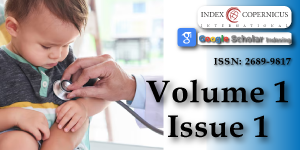Congenital poisoning after maternal parenteral mercury administration
Main Article Content
Abstract
This is the case of a full-term baby girl, born to a mother with a history of parenteral inorganic mercury administration. Thirteen years prior, this mother injected 1mL of inorganic mercury in her right forearm, was subsequently hospitalized, but never received chelation treatment. Her first trimester blood and urine mercury concentration were found to be elevated at 28μg/L (normal <10μg/L) and 162 μg/L (normal <20μg/L) respectively. Her chest x-ray also revealed multiple small punctate metallic densities within the lower lung fields. The remainder of the prenatal course was uneventful. The baby was born at 40 weeks of gestation via uncomplicated caesarian section, and on day of life 3, blood mercury concentrations were found to be 20μg/L (normal <20μg/L). The baby, however, remained asymptomatic throughout her hospital stay and on outpatient follow up. She is now two years old. Mercury poisoning in the pediatric population remains a concern, and knowledge of exposure and health effects continues to be relevant as newer uses and modes of exposure are discovered. This case report illustrates a rare perinatal exposure scenario, and, while the mother and child were essentially asymptomatic, the case serves to raise awareness of the many ways in which fetuses, infants, and children may still be exposed to the harmful effects of mercury. This case underscores the need for careful environmental history taking in pregnancy, after birth, and ideally in the pre-conception period as well.
Article Details
Copyright (c) 2018 Courchia B, et al.

This work is licensed under a Creative Commons Attribution 4.0 International License.
Dally A. The rise and fall of pink disease. Soc Hist Med. 1997; 10: 291-304. Ref.: https://tinyurl.com/y9mndf7z
Warkany J, Hubbard DM. Acrodynia and mercury. Journal of Pediatrics gastroenterology. 1953; 42: 365-386. Ref.: https://tinyurl.com/y9b8scjk
Harada M. Minamata Disease: methylmercury poisoning in Japan caused by environmental pollution. Crit Rev Toxicol. 1995; 25: 1-24. Ref.: https://tinyurl.com/yaj9wosh
Harada, M., Congenital Minamata disease. Intrauterine methylmercury poisoning, Teratology 1977. 18, 285-288. Ref.: https://tinyurl.com/ybs22m55
Baughman TA. Elemental mercury spills. Environ Health Perspect. 2006; 114: 147-152. Ref.: https://tinyurl.com/y9uvjpoy
Aguado S, de Quiros IF, Marin R, E. Gago E. Gómez, et al. Acute mercury vapour intoxication: report of six cases. Nephrol Dial Transplant. 1989; 4:133-136. Ref.: https://tinyurl.com/ybxzmzsa
Hursh JB, Clarkson TW, Miles EF, Lowell AG. Percutaneous absorption of mercury vapor by man. Arch Environ Health 1989; 44: 120-127. Ref.: https://tinyurl.com/y8q8wmdu
Rice K, EM Walker Jr, Miaozong Wu, Chris Gillette, Eric RB. Environmental Mercury and Its Toxic Effects. J Prev Med Public Health. 2014; 47: 74-83. Ref.: https://tinyurl.com/y7ls3nz7
Ambre JJ, Michael J, Welshcarl W, Svare. Intravenous elemental mercury injection: blood levels and excretion of mercury. Ann Intern Med. 1977; 87: 451-453. Ref.: https://tinyurl.com/ybm3xjb9
Jonsson F, Gunilla SE, Gunnar J. A compartmental model for the kinetics of mercury vapor in humans. Toxicol Appl Pharmacol 1999; 155: 161-168. Ref.: https://tinyurl.com/y7b5p6wl
Dencker L. Deposition of metals in embryo and fetus. In: Clarkson T, editor. Reproductive and developmental toxicity of metals. New York: Plenum Press. 1983. 607-637.
Al-Saleh I, Neptune S, Abdullah M, Gamal El Din Mohamed, Abdullah R. Heavy metals (lead, cadmium and mercury) in maternal, cord blood and placenta of healthy women. Int J Hyg Environ Health. 2011; 214: 79-101. Ref.: https://tinyurl.com/y9cotsar
Clarkson TW. The toxicology of mercury. Crit Rev Clin Lab Sci. 1997; 34: 369-403. Ref.: https://tinyurl.com/yd7wuxyo
WHO. Methylmercury. Environmental Health Criteria 101, Geneva: World Health Organization. 1990.
US Environmental Protection Agency. Mercury study report to congress. An assessment of exposure to mercury in the United States. 1997.
Ask K, Akesson A, Berglund M, Marie V. Inorganic mercury and methylmercury in placentas of Swedish women. Environ Health Perspect. 2002; 110: 523-526. Ref.: https://tinyurl.com/ya7h2u8y
Aschner M, FL Lorscheider, KS Cowana, DR Conklina, MJ Vimy, et al. Metallothionein induction in fetal rat brain and neonatal primary astrocyte cultures by in utero exposure to elemental mercury vapor (Hg0). Brain Res 1997; 778: 222-232. Ref.: https://tinyurl.com/yaxm5tfq

